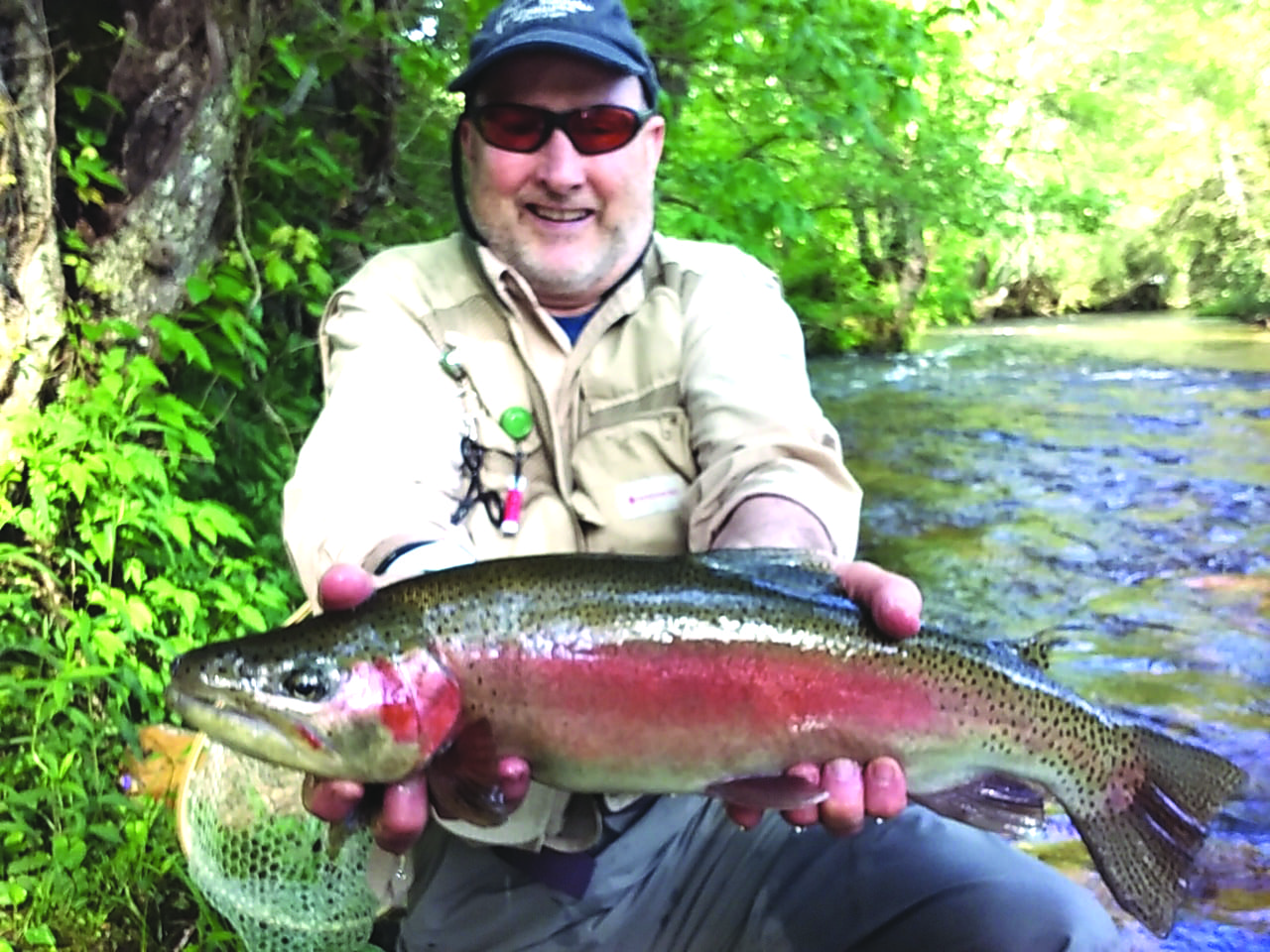by James Bradley
I had a gentleman on the water the other day who basically asked me in an around about way about stream reading. Although I’ve written in detail about this in the past, here’s what I told him while we were fishing.
Trout streams have signs that tell us where the fish are most of the time and where it makes the most sense to make a cast. These signs are not like street signs but rather understanding how the water is flowing or understanding water hydraulics.
Learning to read a stream isn’t hard, and it is the one skill you will acquire as you continue to learn about trout fishing. It is a process of making educated guesses and eliminating areas of the probable no trout zones. I cannot think of anyone wanting to fish in the no trout zones. I’d rather be at the house on the couch than fishing these areas.
Shelter is high on the trout’s radar. Shelter is usually found in deep water, obstructions like large boulders or even submerged logs. These are the places they will run to hide if spooked by anglers, birds, otters or any other natural enemies. Trout do not grow old living in shallow water. They become a meal instead! Fast water conceals trout and makes them hard to see.
Don’t spend your entire day fishing a deep pool. Sure, trout are probably hidden down deep in them, but spend time looking for trout in the seams by the fast water. These fast water currents are known as “Runs”. Usually a feeding trout will be in the seam watching for insects in the faster water. They will dart up into the current, take the insect, then go back to their lie in the seam. I wouldn’t spend too much time fishing those hard-white water currents. A stream is more than just simply the trout’s habitat. It’s also the vehicle that feeds them.
Most trout streams have features like rocks and boulders that deflect the current and allows back eddies. In front of that rock where the water is being split, there is a break where a trout may have its lie. It will not always be behind the rock. Many anglers have a big misunderstanding about this. Remember, it’s water hydraulics and how these currents are affected by obstacles.
If you are new to fly fishing, take time to learn to stream read. Streams give you a lot of clues and learning these little secrets will be rewarding. I bet going home at the end of the day with a sore arm will be worth the time you spend learning to read the water.
If you are wanting to try fly fishing for the first time, want the watchful eye of a casting instructor to help improve your casting, or are just unsure of what you may be doing, we have several guides that teach the “Art of Fly Fishing”, entomology, stream reading, etc. We are a full time fly fishing guide service with professional guides from across North Georgia. So, what are you waiting for, Give Us a Call, We’ll Hook You Up!
Reel ‘Em In Guide Service is an Orvis Endorsed Fly Fishing Guide based out of beautiful Ellijay, Georgia. They have been offering their services to fly anglers since 2001. Their Special Use Permit for Guiding allows them on the Chattahoochee National Forest, they have licensed guides for North Carolina, offer over 7 miles of private trophy waters across Georgia, and offer drift boat trips on the Toccoa River and the Tuckasegee River in NC.
